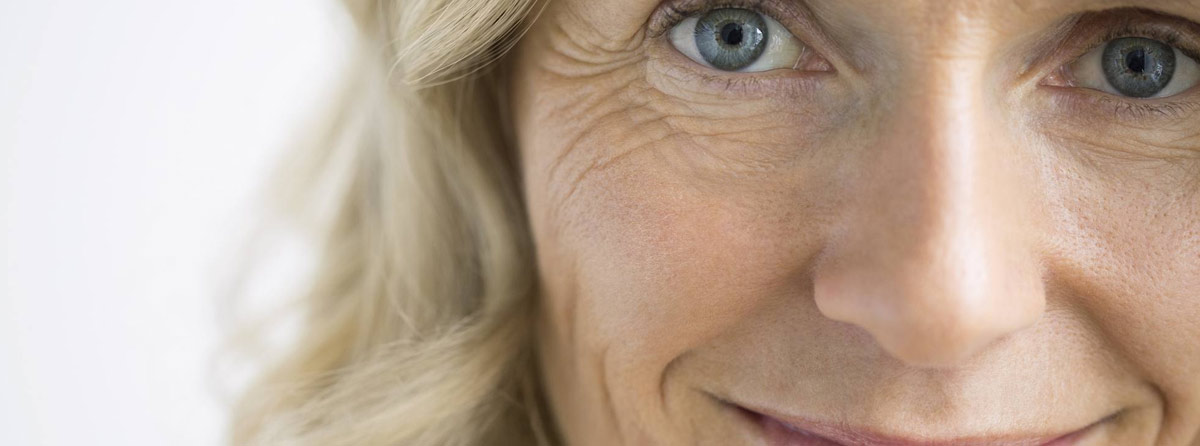The muscles in your face move.
It is thought that lines on the forehead, in between the eyebrows (frown lines), and in and around the edge of the eyelids (crow’s feet) are caused by minor muscle contractions. These wrinkles become more noticeable when you smile, frown, squint, or make other facial expressions that you do all the time. Over time, these facial expressions and gravity work together to cause wrinkles to form.
Damage caused by the sun
Photoaging, or early skin ageing, can happen when the skin is exposed to too much UV radiation (UV) from the sun. A person exposed to Ultraviolet rays may suffer from the break down of collagen fibres that make elastin. When ultraviolet light starts to hurt the skin, an enzyme known as metalloproteinase is created. This enzyme makes and alters our collagen. On the other hand, some healthy collagen fibres are damaged during the process, causing solar elastosis, which is the formation of fibres that are not organised correctly. It happens again and again, but each time, rebuilding gets slower and slower. This causes wrinkles to form.
Smoking
Healthy skin always grows back. Smoking can lead to a significant drop in the amount of new collagen being made. Wrinkles form when there is less collagen in the skin.
Treatment with Botulinum toxin (Botox®)
People use Botox®, a treatment that comes from the botulinum toxin. It inhibits the chemical messages that cause our muscles to contract. If you have wrinkles between your eyebrows (frown lines), Botox is injected into the muscle fibres that cause them to move. For most people, the results of Botox last six to twelve months at most. When the Botox starts wearing off, the muscles again become active, and the wrinkles would then begin to reform. The treatment would then be reproduced. If you don’t choose to have repeat injections, your wrinkles will return, no worse than they were originally. Botox injections can cause redness or bruising at the injection site. This is normal and fade away in a few days(s). In extremely rare circumstances, there might be a slight lid droop over several days after the treatment. However, all reported side effects have been temporary.
Dermal Filler Treatment
Prominent folds around the mouth, nose and chin are the most commonly treated. Hyaluronic acid, a sugar polymer found in nature, is by far the most popular filler used. Just about all Dermal Fillers are temporary, offering improvement for around six to twelve months, during which time the procedure would have to be repeated. Bruising, swelling, and pain may happen as a side effect.
Skin resurfacing treatment
Laser skin resurfacing is a way to get rid of facial wrinkles and other imperfections exacerbated by sun damage or acne. The laser method directs brief, intense pulsating light beams at irregular skin. In ablative laser skin resurfacing, new collagen fibres are made when the old collagen fibres are broken down, making the skin look better. This type of laser also doesn’t have as many issues with post-inflammatory hyperpigmentation (lightening of the skin). Non-ablative laser resurfacing encourages the growth of new, healthy collagen, which helps to improve the shape and appearance of the skin with little downtime. Fractional laser treatment is also an option. The laser pulse is given in a grid enabling regular, untreated skin to remain inside the treatment area, which leads to speedier healing.

